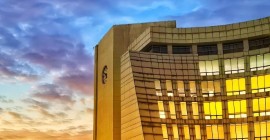[Abstract] On December 31, 2019, Bilibili's 2019 Most Beautiful Night New Year's Eve Gala stood out among various TV galas, with online participation peaking beyond 82 million and replay volume reaching 67 million within a week. It was rated by People's Daily and other mainstream media as the "New Year's Eve Gala that understands young people best". A large number of young people with common interests but unfamiliar with one another, made use of such a media gala built by Bilibili to jointly create a time-and-space-transcending online space for heart-gathering interaction, communication and sharing. Everything from the space, time to participating individuals existed in virtualized, digitalized forms. Yet the sense of collective identity gained by young audience was tangible, undoubted and deeply felt. In the next two days, Bilibili's share price surged over 18%, leading some to joke that "Bilibili held a New Year's Eve gala worth 6 billion!" As a new form of identity under the postmodern media environment, how did Bilibili's New Year's Eve gala stand out among the homogenized TV galas, attracting large numbers of young people to take initiative in watching, sharing and relishing, with an effect comparable to or even surpassing the "Spring Festival Gala phenomenon" in the 1980s and 1990s, and setting off an online craze of "Cheers to Bilibili!"? This is indeed a question worth in-depth research.
This paper proposes the concept of decentralized identity to summarize this new media phenomenon, especially a man-made decentralized social identity under the context of unlimited open mobile media society. Through constructing a virtual ceremonial time-space transcending natural time-space, and evoking collective memory, Bilibili's New Year's Eve gala transformed the audience identity from spectators to participants, and the participation model evolved from other-gaze to self-gaze. Meanwhile, the ceremony was full of symbolic signs carrying different cultural representations and metaphors, interwoven into a semi-open symbolic system, providing a virtual space for psychological gathering for the audience to convey information, differentiate others, and form emotional psychology. No matter when and where participants were in reality, as long as entering the virtual online pilgrimage space, the audience would invariably arouse instinctive emotions through symbolic stimuli, then further converge individual emotions into group sentiments through the barrage field, achieving a kind of "deterritorialized" empathy and resonance under dispersed time-space conditions.
In the post-truth era, emotions can rally people's hearts more than rationality. Globalization has brought an entirely new online society, but also intensified the identity crisis among young groups. It has become very difficult for us to achieve unity and identity through real-life ceremonies of "same time, same place, same group", but we can make use of media ceremonies to create an omnipresent, ever-lasting virtual time-space field that constantly awakens and mobilizes the emotions of every individual entering this field, generates, develops, collides, sublimates them, and thereby fulfills socialization and re-socialization, achieving emotional identity in fragmented time-space, healing the inevitable interpersonal rifts caused by tremendous social changes, and uniting the "younger generation".









